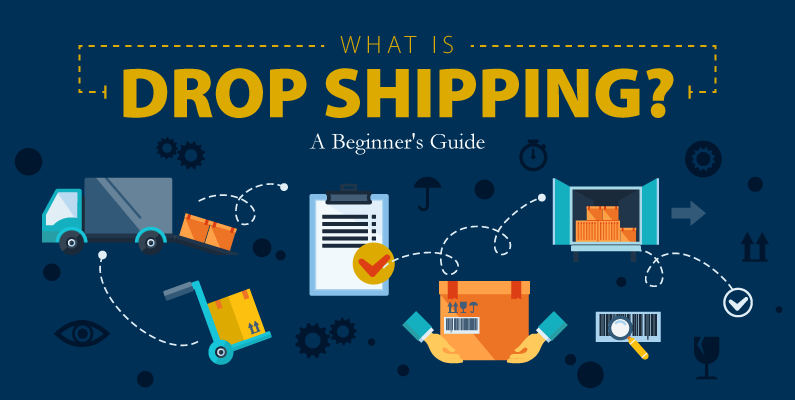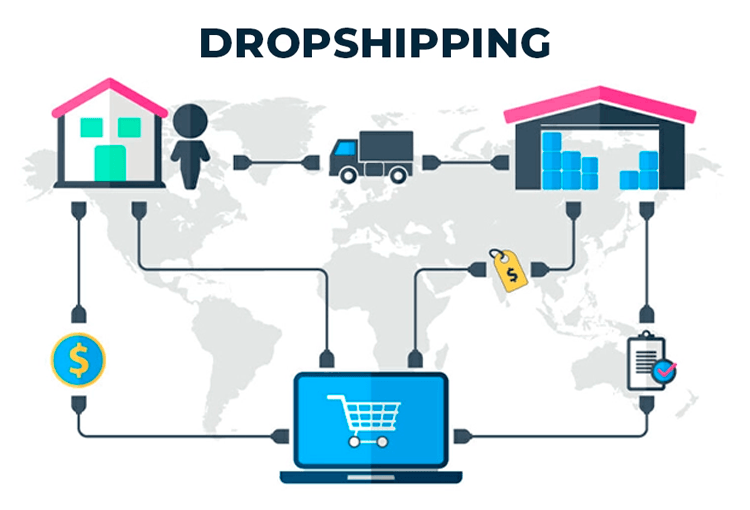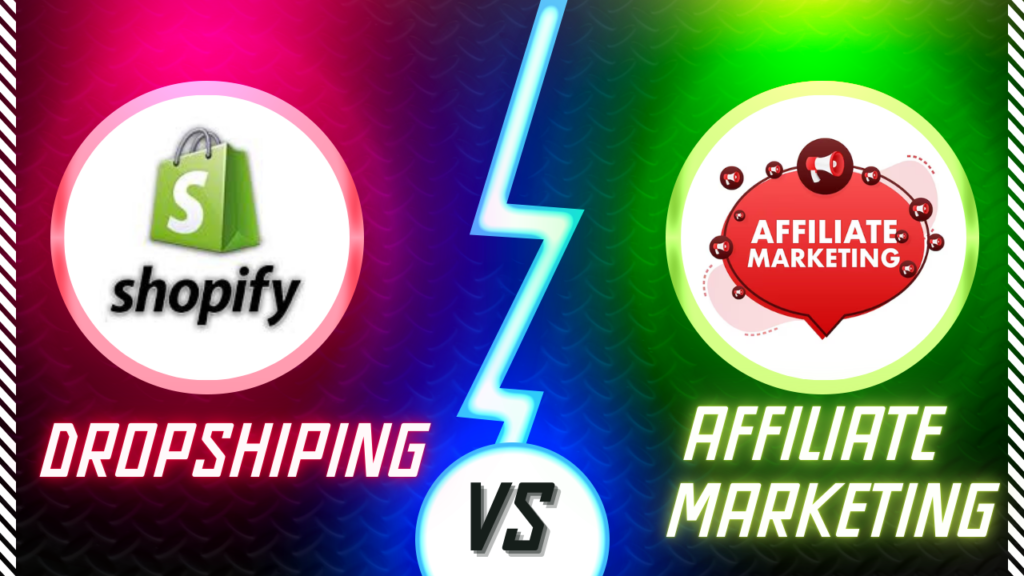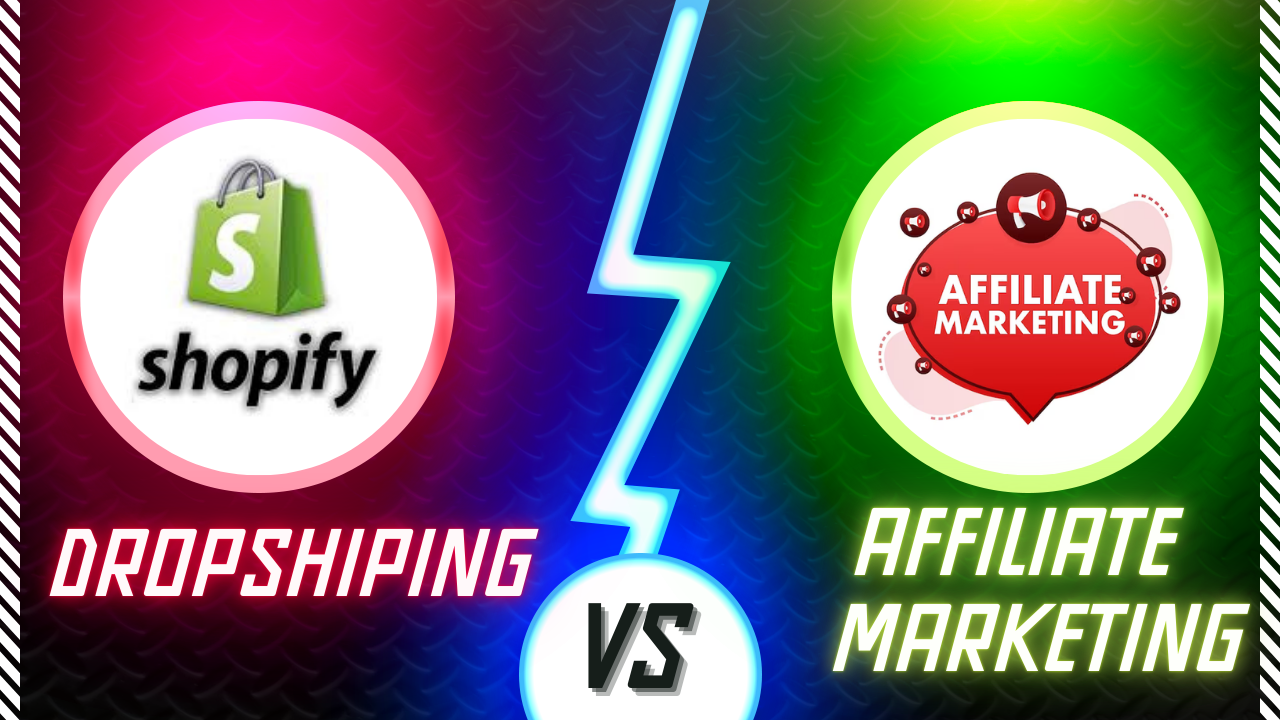Table of Contents
Introduction
In the world of online business, two popular business models stand out: dropshipping and affiliate marketing. Both are relatively low-cost ways to start a business and earn money online, but they differ in terms of investment, control, and profit potential. In this post, we’ll explore both business models, compare their pros and cons, and help you decide which one is better suited for you.
What is Dropshipping?

Dropshipping is an e-commerce business model where you sell products online without holding inventory. When a customer places an order on your website, you forward the order to a supplier or manufacturer who ships the product directly to the customer. You never handle the products yourself, which makes it a relatively low-risk way to run an online store.
- Set up an online store – You create a website or use an e-commerce platform like Shopify or WooCommerce.
- Partner with suppliers – You find suppliers who are willing to ship products directly to your customers.
- Customer places an order – When a customer purchases a product from your store, you forward the order to the supplier.
- Supplier ships the product – The supplier ships the product to the customer with your branding.
How Dropshipping Works

Pros of Dropshipping
- Low startup costs – No need to buy inventory upfront.
- Scalable – As your business grows, you can add new products without worrying about logistics.
- No inventory management – The supplier handles the inventory and shipping.
Cons of Dropshipping
- Lower profit margins – Due to reliance on suppliers, your margins can be slim.
- Limited control over product quality and shipping – Since the supplier handles these aspects, you may have less control over the customer experience.
- High competition – Since barriers to entry are low, many people enter the same niches, leading to intense competition.
What is Affiliate Marketing?

Affiliate marketing is a performance-based business model where you earn a commission for promoting other people’s products or services. Instead of running your own online store, you promote products through affiliate links on your website, social media, or other online platforms. When someone clicks your link and makes a purchase, you earn a commission.
How Affiliate Marketing Works
- Choose a niche – You select a specific topic or industry to focus on, such as health, technology, or finance.
- Join affiliate programs – You sign up for affiliate programs like Amazon Associates, ClickBank, or others.
- Promote products – You create content (such as blog posts, videos, or reviews) to promote the products using affiliate links.
- Earn commissions – You receive a commission whenever someone purchases a product through your affiliate link.

Pros of Affiliate Marketing
- Low investment – You don’t need to buy products or handle shipping.
- Passive income potential – Once your content is created and optimized, it can continue to generate commissions without ongoing effort.
- Flexibility – You can promote products from multiple companies in different niches.
Cons of Affiliate Marketing
- Dependence on third-party companies – You have no control over the products, pricing, or customer service.
- Commission-based income – You only earn when someone makes a purchase, and commissions can vary.
- Requires content creation – To be successful, you need a consistent content strategy to drive traffic.
Key Differences Between Dropshipping and Affiliate Marketing
Investment and Startup Costs
- Dropshipping requires setting up an online store, paying for website hosting, and marketing costs, but you don’t need to invest in inventory.
- Affiliate marketing is usually cheaper to start, as you only need a website or blog and the ability to create content or generate traffic.
Control Over Product and Inventory
- Dropshipping gives you more control over the product selection and customer experience but limited control over quality and shipping.
- Affiliate marketing gives you no control over the product itself, but you can still influence which products to promote and how you market them.
Marketing and Traffic Generation
- Dropshipping requires ongoing efforts in advertising, SEO, and social media marketing to attract customers to your store.
- Affiliate marketing relies on creating high-quality content that drives organic traffic, along with SEO, paid ads, and email marketing to generate sales.
Profit Margins
- Dropshipping generally offers lower profit margins due to reliance on suppliers, but the potential for sales volume is high.
- Affiliate marketing can offer higher profit margins if you promote high-ticket products or services, but commissions vary widely.
Which Model is Better for You?
The answer to this depends on your goals, skills, and the time you can commit to building your business.
- If you’re looking for low startup costs and want to focus on selling physical products without worrying about inventory or shipping, dropshipping might be a better fit.
- If you prefer to focus on content creation and enjoy promoting products that you believe in, while earning passive income, affiliate marketing could be a better choice.
Conclusion
Both dropshipping and affiliate marketing have their advantages and challenges. Dropshipping allows you to sell products directly, but it requires more hands-on management and lower profit margins. On the other hand, affiliate marketing can generate passive income with less overhead, but your success depends on generating traffic and choosing the right products to promote. Evaluate your skills, budget, and long-term goals before making your decision.






